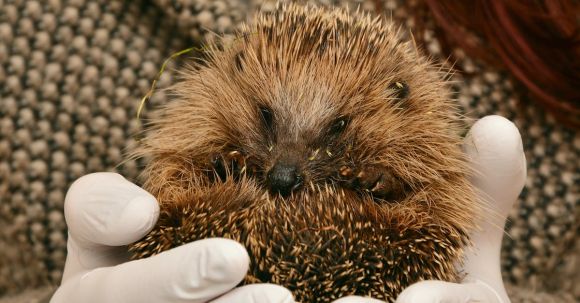Hibernation is a fascinating phenomenon that allows certain animals to survive harsh winter conditions. During this period, animals enter a state of deep sleep, conserving energy and reducing their metabolic rate. But how exactly do animals hibernate? In this article, we will explore the different strategies employed by various hibernating creatures.
Adapting to Survive
Hibernation is an incredible adaptation that allows animals to survive when food and resources are scarce. It is primarily observed in mammals, such as bears, bats, and ground squirrels, although some reptiles, amphibians, and even insects also undergo a similar process.
Preparing for Hibernation
Before entering hibernation, animals undergo several physiological changes to prepare their bodies. They begin by accumulating fat reserves, which serve as an energy source during the dormant period. This is particularly crucial for animals that hibernate for extended periods, as their metabolism slows down significantly.
Finding a Safe Shelter
Finding a safe shelter is another vital aspect of hibernation. Animals seek out protected areas, such as underground burrows or tree cavities, to shield themselves from the harsh winter elements. These shelters provide insulation and protect them from predators.
Entering Hibernation
Once animals have prepared their bodies and found a suitable shelter, they enter hibernation. During this phase, their heart rate, body temperature, and breathing rate drop significantly. This reduced metabolic rate allows them to conserve energy and survive on their fat reserves.
Regulating Body Temperature
One of the most remarkable aspects of hibernation is the ability of animals to regulate their body temperature. Different hibernating species employ various strategies to achieve this. Some animals, like bears, lower their body temperature slightly but remain warm compared to the surrounding environment. Others, like ground squirrels, allow their body temperature to drop significantly, sometimes near freezing.
Intermittent Awakening
Although animals in hibernation appear to be in a deep sleep, they periodically awaken during this period. These intermittent arousals serve essential functions, such as eliminating waste and replenishing depleted energy stores. Despite these brief awakenings, hibernating animals quickly return to their dormant state.
Surviving without Food or Water
One of the most remarkable aspects of hibernation is the ability of animals to survive without food or water for extended periods. By significantly lowering their metabolic rate, hibernating animals can conserve energy and rely on their fat reserves. Some species, like the Arctic ground squirrel, can hibernate for up to 200 days without consuming any food or water.
Emerging from Hibernation
As winter draws to an end, hibernating animals begin to emerge from their dormant state. This process can take anywhere from a few hours to several days, depending on the species and environmental conditions. Once they wake up, animals must replenish their energy reserves and resume their normal activities, such as foraging and mating.
The Importance of Hibernation
Hibernation plays a crucial role in the survival of many animal species. It allows them to conserve energy, survive harsh winter conditions, and reduce competition for limited resources. Additionally, hibernation helps maintain the delicate balance of ecosystems, as it ensures the survival of species that would otherwise struggle to endure the cold months.
In conclusion, hibernation is a remarkable adaptation that allows animals to survive during the winter. By lowering their metabolic rate, regulating their body temperature, and relying on fat reserves, hibernating animals can endure months without food or water. Understanding the mechanisms behind hibernation not only provides insight into the fascinating world of animal behavior but also highlights the incredible adaptability of nature.
